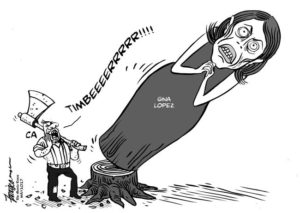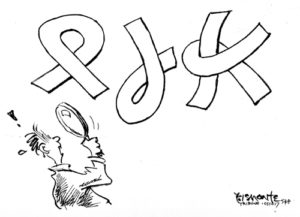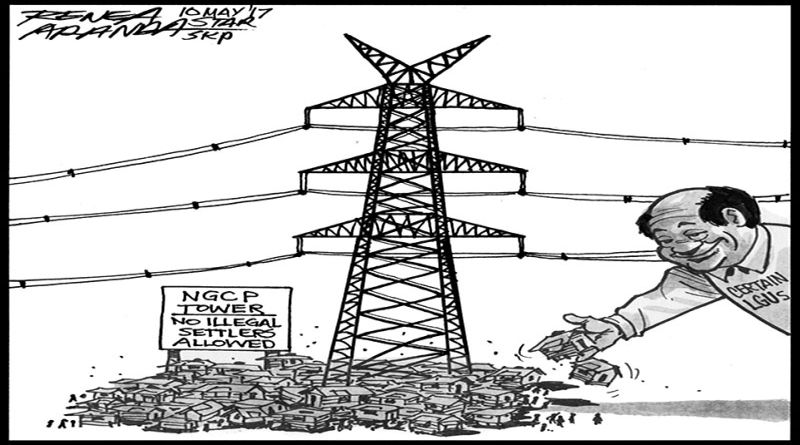Public hazard
Last month, power supply was disrupted and traffic slowed along the South Luzon Tollway after fire engulfed a transmission tower of the National Grid Corp. of the Philippines. The fire in Alabang, Muntinlupa started in one of the shanties at the foot of the NGCP tower.
Reports said the illegal settlers promptly returned to the foot of the tower as soon as the fire was out, despite repeated warnings from the NGCP about the risks posed by allowing illegal settlements around its towers. The NGCP said there are informal settlers in 172 of its transmission towers all over Luzon.
Unless prevented by authorities, there are people who will set up informal shelters wherever they can. In Metro Manila, there are shanties even under bridges. The law specifically tasks local governments, particularly barangay personnel in coordination with police, to prevent squatting.
Local authorities realize the hazards when squatters settle along waterways where they can be swept away by floods, or when informal settlements pose risks to basic services when shanties are set up around transmission and telecommunications towers.
But there are local officials who see squatters chiefly as voters, and even encourage informal settlements to beef up their political support during elections. In several areas, barangay officials themselves are the landlords in squatter settlements, collecting fees from everything from rent to water and electricity connections.
Millions of people lack decent shelters in the country, but squatting is not the answer to the problem. Neither is grabbing housing units meant for various sectors, as the communist-leaning members of Kadamay have done. There are also laws governing right of way for public utility facilities. Allowing illegal settlers to break the law endangers the squatters and puts public services at risk.
Authorities must show political will in enforcing laws and protecting the interest of the majority. And higher officials should penalize those who fail to enforce the laws.













